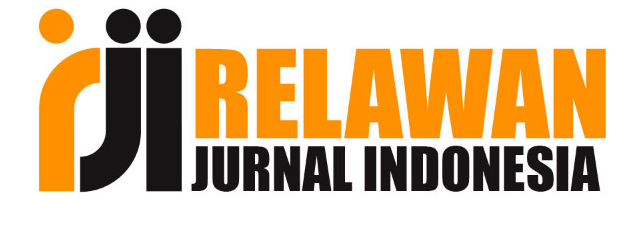Analisis Dampak Kebijakan Stimulus Covid–19 melalui Restrukturisasi Kredit pada Permodalan dan Likuiditas Perbankan dan BPR
DOI:
https://doi.org/10.36982/jiegmk.v13i2.2716Abstrak
The new variant of COVID-19, namely the delta variant, has made the impact of the coronavirus disease 2019 (COVID 19) pandemic continue. Government policies that are still implementing Community Activity Restrictions (PPKM) have resulted in several business actors and employees experiencing a decline and even losing their income during the Covid-19 pandemic. The issuance of the POJK is an anticipatory and follow-up measure against a potential decrease in the debtor's capacity to pay debts to the bank. As a form of this anticipatory and follow-up effort, the Financial Services Authority (OJK) extended the term of the bank credit restructuring policy from March 2022 to March 2023. Credit restructuring is an effort to improve credit activities for debtors who have the potential to experience difficulties in fulfilling their obligations. If the term of the credit/financing restructuring agreement expires before March 31, 2023, then the credit/financing can be determined as having the quality of Current to. end of the term of the restructuring agreement. Credit restructuring will indeed maintain the quality of banking assets. This is because restructured loans will automatically run smoothly. However, the restructuring costs will add to the bank's burden and could disrupt bank capital and liquidity. Based on the results of the analysis, the capital and liquidity levels of Commercial Banks, Conventional Commercial Banks (BUK), and Rural Banks are still adequate and very good, This can be seen from the great value of the CAR and LDR ratio amid increasing credit risk and decreasing profitability in line with economic activity who have not recovered as a result of the conditions of the Covid-19 pandemic.
Keywords: Covid - 19 stimulus policy, credit restructuring, capital, liquidity, banking and Rural Banks
Referensi
Abdul Kholiq, R. R. (2020). Dampak Implementasi Restrukturisasi Pembiayaan Terhadap Likuiditas Bank Syariah Pada Situasi Pandemi Covid-19. El Barka: Journal of Islamic Economic and Business, 3(2), 282–316.
Abubakar, L., & Handayani, T. (2021). Kebijakan Stimulus Dampak COVID-19 Melalui Restrukturisasi Kredit Dalam Rangka Pemulihan Ekonomi Nasional. 88–111.
Astari, G. A. Y., & Dewi, L. G. K. (2022). Perbandingan Tingkat Likuiditas Sebelum Dan Sesudah Diterapkan Kebijakan Restrukturisasi Kredit (Studi Pada BPR Sekabupaten Gianyar). 13(03), 881–887.
Astrini, K. S., Suwendra, I. W., & Suwarna, I. K. (2018). Pengaruh CAR, LDR, Dan Bank Size Terhadap NPL Pada Lembaga Perbankan Yang Terdaftar Di Bursa Efek Indonesia. E-Journal Bisma Universitas Pendidikan Ganesha, 9.
Puspita, A. A., Zanah, N. M. Al, & ??????????i, ?????? (2020). Analisa Perpanjangan Restrukturisasi Kredit Terhadap Likuiditas Perbankan Sebelum dan Sesudah Pandemi Covid 19. 2(3), 140–148.
Seto, A. A., & Septianti, D. (2021). Dampak Pandemi Covid 19 Terhadap Kinerja Keuangan Sektor Perbankan Di Indonesia. 8(2).
Sugiyono. (2017). Metode Penelitian Kuantitatif, Kualitatif, dan R&D. Bandung : Alfabeta.
Suwardi. (2021). Relaksasi kebijakan perbankan ditengah pandemi covid 19 dalam penyaluran kredit perbankan. E-Jurnal Kewirausahaan, 4(2), 20–28.
Unduhan
Diterbitkan
Cara Mengutip
Terbitan
Bagian
Lisensi
Hak Cipta (c) 2022 emilda emilda, Meilin Veronica

Artikel ini berlisensiCreative Commons Attribution-ShareAlike 4.0 International License.
Authors retain copyright and grant the journal right of first publication with the work simultaneously licensed under a Creative Commons Attribution License that allows others to share the work with an acknowledgement of the work's authorship and initial publication in this journal.
Â
Authors are permitted and encouraged to post their work online (e.g., in institutional repositories or on their website) prior to and during the submission process, as it can lead to productive exchanges, as well as earlier and greater citation of published work.
Â
LP2M Indo Global Mandiri University has the right to multiply and distribute the article and every author is not allowed to publish the same article that has been published in this journal.










